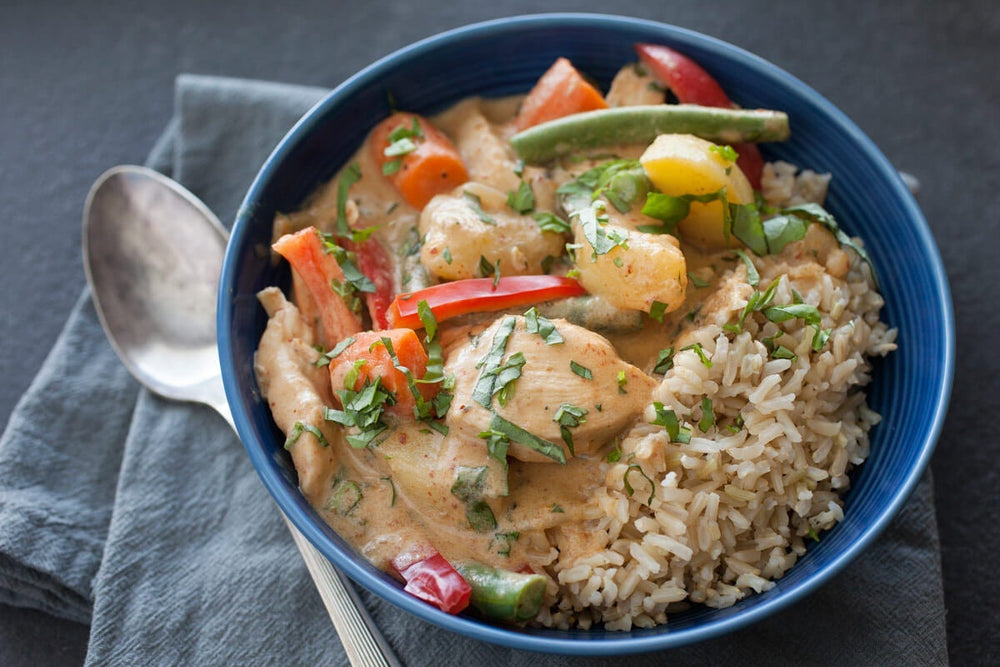Though each brand of curry paste is a little different, most labels offer a simple recipe that will show the correct ratio of curry paste to coconut milk for that particular brand (for example, 2 tablespoons of curry paste to 1 can of coconut milk). Use that same ratio as the basis for this recipe, then add more or less depending on your taste. If you have never used curry paste before, start with a smaller amount and add more to your liking once you've added the coconut milk. Thai basil is especially good as the finishing touch in this recipe, but if you are growing other varieties or can't find it in the store, you can certainly substitute another type of fresh basil.
Yield: 6-8 servings
Ingredients
- 1 tbsp sesame oil
- 1 small onion, chopped
- 1.5 lbs skinless chicken breasts, sliced, or 1 package tofu, cubed
- Approx. 4 tbsp red curry paste (see note above)
- 1 tbsp minced or ground ginger
- 2 tsp garlic powder
- 2 tbsp brown sugar
- 1 tbsp fish sauce (optional)
- 2 14-oz cans coconut milk
- 5 small yukon gold potatoes, chopped into large chunks
- 3 medium carrots, chopped
- ½ lb green beans
- 1 red bell pepper, thinly sliced
- ¾ cup Thai basil, minced
Instructions
- Heat the sesame oil in a large pot over medium heat, just until fragrant. Add the onion and cook for 2 minutes. Add the chicken and cook for 5 minutes, stirring occasionally. (If you are substituting tofu for chicken, wait until later in the recipe to add it; see below.) Spoon curry paste into the pot and cook for another 3 minutes, stirring constantly. This will slightly toast the paste and enhance its flavor.
- Stir in ginger, garlic powder, sugar, fish sauce, and coconut milk until spices and curry paste are fully mixed into the milk. Add the potatoes and carrots (along with tofu, if you are using it), stir and cover. Turn the heat down to low and cook for 20 minutes, stirring occasionally. If the curry exceeds a slow simmer, cook without a lid and stir more frequently.
- Add the green beans and cook for an additional 5 minutes. Remove the pot from the heat and stir in the peppers and ½ cup of minced basil. Serve hot over rice and garnish each serving with the remaining basil.

Featured Ingredient: Thai Basil
Thai basil has a hint of anise or licorice flavor, is spicier than sweet basil, and holds up better than other basil varieties in high heat. It's most commonly used in Asian dishes. Thai basil is an excellent herb to grow yourself, adding diversity to both garden and table with its unique flavor and beautiful purple stems. This herb can be grown in a small pot on a windowsill inside for several months. For more abundant harvests and variety, grow a few different types of basil in a container or in a garden bed outside. Basil is a warm weather plant, but it also stores nicely when pureed with water or oil, then frozen for use in the winter months. For the fullest flavor when using in a hot dish, add fresh basil within the last 5 or 10 minutes of cooking time. Learn how easy it is to grow your own basil!





 Herbs
Herbs
 Vegetables
Vegetables
 Fruit
Fruit
 Flowers
Flowers
 Succulents
Succulents


